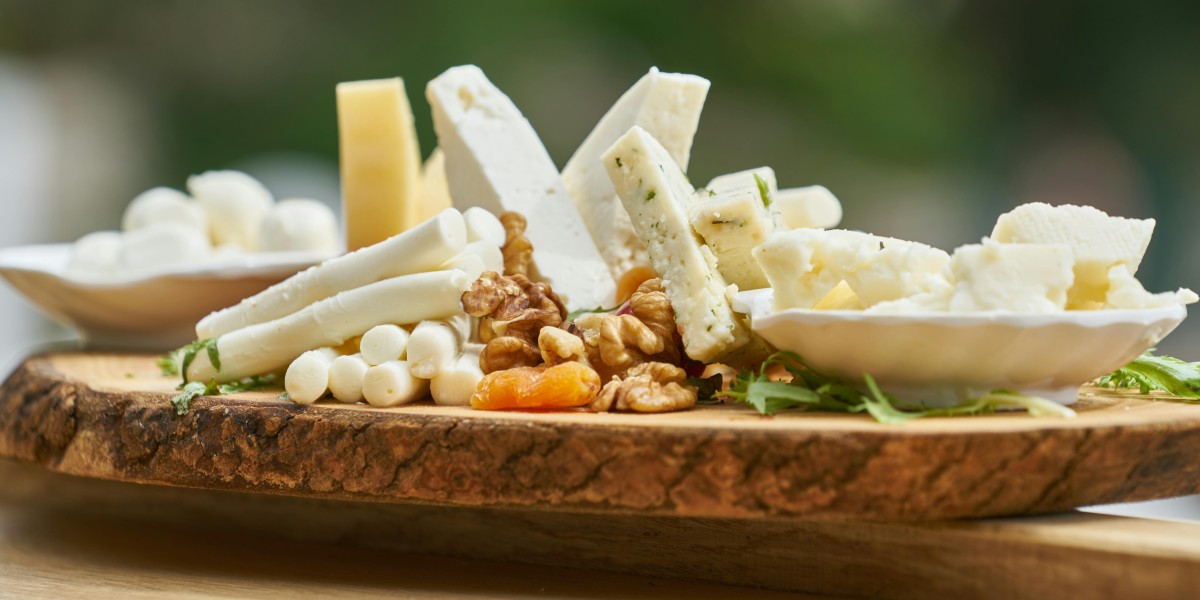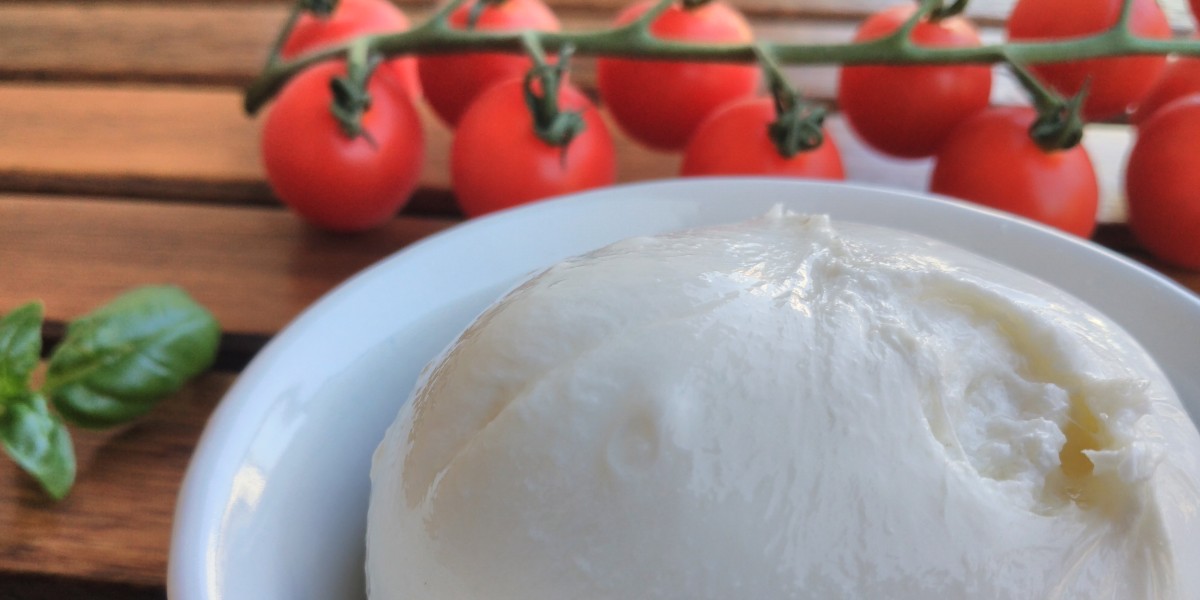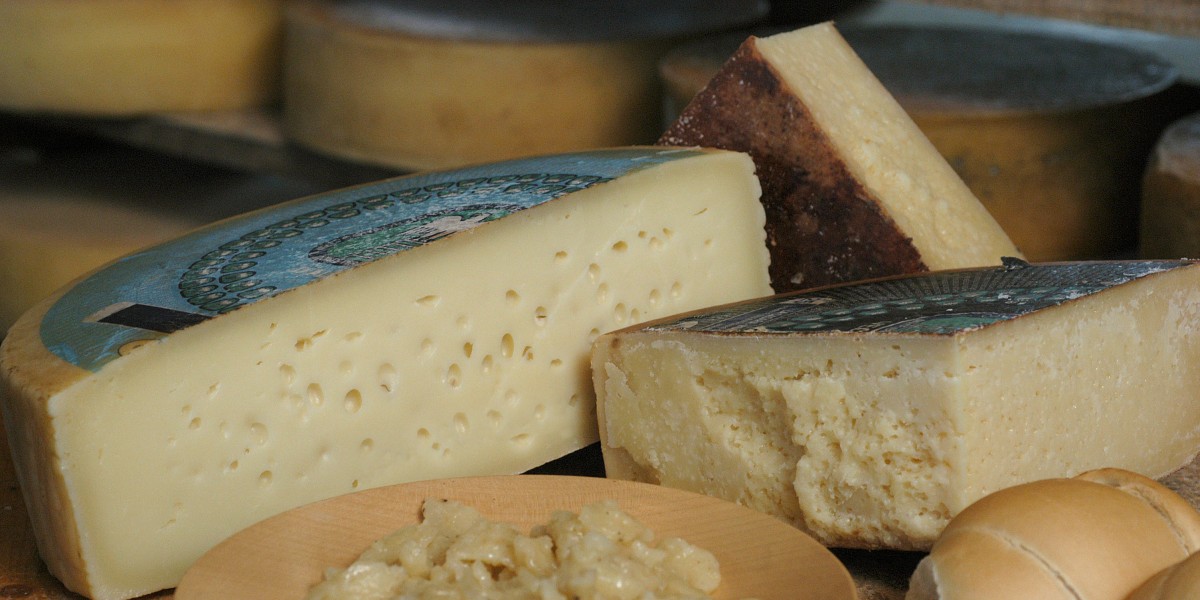
Italy does cheese the way nonna does Sunday lunch: with pride and deep regional roots. Across the Alpine pastures, the Po Valley dairies and the sunny farms of Sicily, each area champions its own cheese styles. These are shaped by milk type, ageing traditions and DOP/IGP rules. The heavy hitters sit under the umbrella of top Italian PDO cheeses, and the nuances unfold as terroir and technique shift from valley to coast.
Aosta Valley
In Valle d’Aosta, high-altitude pastures and tiny alpine dairies shape cow's-milk cheeses with alpeggio character and cellar ageing that brings nutty, herb‑led flavours.

- Fontina DOP was born in medieval times and still uses raw milk, giving a semi‑soft, supple and gently earthy profile. Wheels age in cool caves and are washed to keep the rind elastic, which makes it melt beautifully in fonduta or over polenta.
- Valle d’Aosta Fromadzo DOP is a historic farmhouse cheese often made with mixed‑season milks, bringing a rustic, slightly tangy personality. Semi‑hard and straw‑coloured, it leans milky when young and more savoury as it ages. Locals grate it over soups or shave it into salads for a nutty lift.
- Toma di Gressoney is linked to the Walser communities of the Lys Valley and leans buttery with alpine herb notes. Semi‑hard and lightly aromatic, it’s a picnic staple with rye bread and cured meats.
Piedmont
Piemonte is serious cheese country, drawing on cow and goat milk, cave ageing, and bold flavours shaped by the Alps and truffle hills.
- Castelmagno DOP, first mentioned in 13th‑century charters, is semi‑hard and can develop natural blue mottling in cave ageing. Expect a crumbly texture, lactic tang and a savoury finish that loves butter and sage. It shines in gnocchi al Castelmagno or crumbled into risotto.
- Robiola di Roccaverano DOP, Italy’s only DOP cheese made entirely from goat’s milk, is soft and delicate with a yoghurty twang. Short maturation keeps it fresh and spreadable with a faint farmyard whisper.
- Toma Piemontese DOP is a traditional mountain cow’s cheese that ranges from sweet and milky when young to nutty and firm when aged. The smaller wheels make it versatile at home and in trattorie.
Liguria
In Liguria, steep terraces and a maritime climate favour fresh, light cheeses for pies and flatbreads, with goat’s milk in the inland hills.
- Prescinsêua is a very old, lightly sour curd unique to Genova, somewhere between yoghurt and ricotta. The flavour is gentle, making it a natural partner for greens and herbs.
- San Stè, made in the Val di Vara, is a semi‑hard cow’s cheese with gentle butter and hay notes that deepen with age. Shavings over minestrone or a drizzle of olive oil and cracked pepper bring it into focus.
- Formaggetta ligure are small, soft discs, often goat‑based, with a lactic, fresh bite. Light drying concentrates flavour while keeping tenderness. With taggiasca olives and a crisp white, it’s very Ligurian.
Lombardy
Lombardy mixes Po Valley dairying with alpine caves, producing blues, washed‑rinds and delicate soft cheeses. The region also boasts some of Northern Italy's best classic pasta dishes.

- Gorgonzola DOP, named after the town near Milan, is one of Europe’s oldest blues, with two recognised styles: dolce (creamy, mild) and piccante (firmer, spicier). The blue veining brings mushroomy tones and gentle spice. Top examples come from Novara and Pavia provinces.
- Taleggio DOP is a medieval, cave‑aged washed‑rind square with meaty aromas and a custardy centre. Brine washing encourages that orange blush and savoury depth.
- Quartirolo Lombardo DOP is a soft cow’s milk cheese whose name refers to the late‑summer “fourth” regrowth of grass that cows traditionally grazed. Young wheels are fresh and crumbly; aged versions turn more savoury and compact.
Basilicata
Rugged Basilicata brings mixed‑milk wheels and long ageing, shaped by transhumance and remote pastures.

- Canestrato di Moliterno IGP shows a basket‑imprinted rind and mixed sheep‑cow milk for a complex, spicy profile. Some wheels are oil‑rubbed during ageing to deepen aroma.
- Pecorino di Filiano DOP is aged in natural caves, and is firm and herbal with a golden rind. The savoury depth pairs neatly with Aglianico wines.
- Caciocavallo Podolico lucano is made from rare Podolica cow milk, with spring pastures lending floral notes. Long ageing builds a spicy, lingering finish and a dense, sliceable paste.
Calabria
Calabria offers assertive flavours, smoked styles and stretched‑curd cheeses that suit grilling and hearty dishes.
- Caciocavallo Silano DOP in Calabrian hands can be slightly smokier or spicier, still matured hanging in pairs. The dense paste toasts beautifully without losing elasticity. Rustic bread and a spoon of ’nduja is a local mood.
- Pecorino del Monte Poro DOP comes from coastal hills where salty breezes nudge flavour. Semi‑hard and pleasantly sharp, it stands up to chilli and anchovy pasta.
- Ricotta affumicata di Mammola is smoked ricotta, gently browned and aromatic. Sliced or grated, it adds depth to sauces and vegetable dishes.
Trentino–South Tyrol
This bilingual alpine region runs on small dairies and washed‑rind traditions, with distinctive pasture aromas.

- Puzzone di Moena DOP is a famously pungent washed‑rind cheese with deep umami. Brine washing in cool cellars yields a tacky orange rind and supple paste. The Val di Fassa around Moena is its heartland.
- Spressa delle Giudicarie DOP traditionally uses skimmed mountain milk, giving a leaner, firm and aromatic cheese. Ageing brings walnut and hay notes that echo alpine meadows. Shaved onto polenta or with speck, it’s quietly addictive. The Giudicarie valleys and Lake Garda hinterland are classic zones.
- Stelvio/Stilfser DOP is a square, washed‑rind cheese from South Tyrol, balancing buttery sweetness with gentle funk. Strict rules and local milk keep the profile consistent. Rye bread and apples make an easy pairing. Markets around Bolzano/Bozen and Merano/Meran feature it widely.
Friuli Venezia Giulia
Borderland Friuli Venezia Giulia blends alpine and Central European traditions, with robust cooking, cheeses and clever farmhouse techniques.
- Montasio DOP, created by Benedictine monks, spans from fresh to very old, always clean and nutty. It melts like a dream in frico, the crisp cheese‑and‑potato cake. Semi‑hard with a natural rind, it’s a kitchen workhorse.
- Formadi Frant is a thrifty, historic style reworking of broken curds with cream or butter, sometimes spices. The paste is spreadable, tangy and ridiculously moreish.
- Latteria is the everyday farmhouse wheel with gentle milkiness and slight acidity. Young versions suit the table; older ones grate into bakes. Village dairies near Pordenone and Gorizia keep it flowing.
Emilia–Romagna
In Emilia–Romagna, grand wheels meet indulgent fresh spreads, anchored in wheat plains and pig‑raising traditions.
- Parmigiano Reggiano DOP, documented since the Middle Ages, is the benchmark grana with tyrosine crystals and deep savouriness. Minimum ageing is 12 months, though 24–36 months are common for complexity.
- Squacquerone di Romagna DOP is a wobbly, spreadable fresh cheese with delicate acidity and high moisture. It’s the soul of piadina romagnola with rocket and prosciutto. Flavour is milky and clean, best within days of production.
- Formaggio di Fossa di Sogliano DOP is sealed in straw‑lined pits until autumn, concentrating aroma and spice. The pit‑ageing tradition dates to hiding food during raids and now lends an unmistakable tang.
Tuscany
Toscana is pecorino country, with sheep grazing on herb‑scented hills and a taste for mellow, buttery profiles.

- Pecorino Toscano DOP comes fresco or stagionato, smooth and sweet‑leaning with a gentle sheepy richness. Aged wheels often show olive‑oil rubbed rinds and a firmer bite.
- Marzolino is a springtime pecorino traditionally made in March, small and tender. Flavours are lactic and grassy with a soft chew that loves new season olive oil.
- Caciotta Toscana is a mild table cheese, often made from mixed milk, young and creamy. It slots into sandwiches and melts neatly on crostoni.
Lazio
Lazio's most typical cheeses include robust sheep’s cheeses for Roman pasta, plus exceptional fresh whey cheeses.
- Pecorino Romano DOP is ancient and assertively salty, the backbone of one of Central Italy's classic pasta dishes, cacio e pepe, and amatriciana. Hard, dry and grateable with a peppery edge, it’s typically aged 5–8 months.
- Ricotta Romana DOP is whey‑based and delicate, made from sheep’s whey with a cloudlike texture. It’s best within days, and slightly warm is bliss. Cocoa and sugar on top is an old‑school treat, and it slips neatly into pastries.
- Caciofiore della Campagna Romana is an ancient soft cheese coagulated with cardoon thistle, giving a custardy, vegetal profile. Gentle bitterness balances the richness, especially with good olive oil.
Abruzzo
Mountainous Abruzzo favours sheep and stretched‑curd cow cheeses designed for grilling and rustic cooking. Some of Abruzzo's best cheeses are rooted in techniques that go back centuries.
- Pecorino di Farindola is uniquely made using pork rennet, yielding a spicy, savoury character that lingers. Semi‑hard with a firm bite, it stands up to grilled meats. Shavings over arrosticini make a very Abruzzese plate.
- Scamorza abruzzese is a pear‑shaped pasta filata, fresh or smoked, elastic and milky. Brief hanging gives it a delicate skin and bounce. It takes well to the grill or a hot pan.
- Caciotta abruzzese is an everyday table cheese with gentle acidity and a soft, sliceable paste. It fits neatly into stuffed breads and oven bakes.
Umbria
Landlocked Umbria leans into sheep and mixed‑milk cheeses that suit truffles, legumes and rustic breads.

- Caciotta umbra is soft‑ripened, mild and gently tangy, the everyday staple on Umbrian tables. Young wheels slice clean and melt well into torta al testo.
- Pecorino di Norcia is a mountain pecorino with a robust, savoury edge. Ageing firms the paste and pushes nutty depth that stands up to cured meats. Grated into lentil soups, it feels very local.
- Ricotta salata umbra is pressed and salted ricotta, lightly aged to grate or crumble. Clean, milky salinity lifts tomato sauces and salads. It adds texture without heaviness.
Marche
Marche balances coastal freshness with inland hills and the dramatic pit‑aged tradition along the Romagna border.
Casciotta d’Urbino DOP, a sheep‑cow blend, carries a mild, slightly sweet, fine‑grained profile that folklore links to Michelangelo’s table. The texture is plush without being heavy.
Pecorino dei Monti Sibillini is a mountain cheese with aromatic herb notes from high pastures. Semi‑hard and pleasantly savoury, it grates into legume soups with ease. Villages around the Sibillini National Park keep traditions steady.
Formaggio di fossa uses pit ageing in covered wells to concentrate spicy, fermented aromas. Producers across northern Marche share this heritage with their Romagna neighbours.
Molise
Italy's youngest region, Molise shines with stretched‑curd traditions and characterful pecorini from inland pastures.
- Caciocavallo di Agnone is a classic tear‑drop pasta filata matured hanging in pairs, buttery‑sweet when young and spicier with age. A quick sear in the pan brings out aromas.
- Stracciata di Agnone is fresh ribbons of stretched curd, glossy, elastic and all about pure milk flavour. It’s made to be eaten within 48 hours, ideally still slightly warm.
- Pecorino di Capracotta is a mountain sheep’s cheese with a firm paste and herbal notes. It ages well, gaining savoury depth and a clean finish.
Veneto
Veneto offers versatile table and grating cheeses shaped by the alpine foothills, river plains and old Venetian trade.

- Asiago DOP has two faces: pressato (fresh, milky) and d’allevo (aged, nutty). The young style loves toasties; the aged style shines grated on soup. Mountain huts across the plateau often serve it alongside polenta.
- Monte Veronese DOP is a Verona classic with versions from whole or partially skimmed milk. Flavour runs from sweet and buttery to savoury and spicy in old wheels.
- Piave DOP, named after the Piave river, is a hard, sweet-savoury cow’s cheese that turns crystalline with age. “Vecchio” styles grate beautifully and carry a roasted nut finish.
Campania
Campania is the home of buffalo‑milk magic and bold pasta filata cheeses made for baking and pizza.
Mozzarella di Bufala Campana DOP comes from herds near Caserta and Salerno, porcelain‑white and juicy. Hot whey, hand‑cutting and storage in briney whey define its bounce and sheen. Best at room temperature on its own or with tomatoes.
Provolone del Monaco DOP hails from the Sorrento Peninsula, a semi‑hard, pear‑shaped cheese aged to a spicy, nutty finish. The name recalls cloaked cheesemakers who resembled monks.
Caciocavallo Silano DOP is a traditional stretched‑curd made across several southern regions, with Campania versions nicely balanced between buttery and sharp. Hung on beams to age, it develops a firm, sliceable paste.
Puglia
Puglia excels in pasta filata artistry and robust sheep’s cheeses, mirroring olive groves and wheat fields.

- Burrata di Andria IGP is a pouch of stretched curd filled with cream and shredded curd, invented in the early 20th century. The centre is voluptuously creamy with a sweet dairy core. It’s at its best within 24–48 hours.
- Canestrato Pugliese DOP is a hard sheep’s cheese aged in reed baskets that imprint a woven rind. Grated onto the classic southern Italian pasta dish of orecchiette with turnip tops, it nails the local palate.
- Cacioricotta pugliese uses a hybrid technique, heating like ricotta but pressing like cheese, often with goat or sheep milk. Tangy and crumbly, it shines as a grating cheese.
Sicily
Sicilia brings sun, salt and spice to the dairy, with ancient techniques and bold character.

- Ragusano DOP is a large block‑shaped pasta filata, traditionally hung in pairs with cords. Sweet and buttery when younger, it grows intensely savoury with age.
- Pecorino Siciliano DOP is one of Italy’s oldest cheeses, firm and savoury with a peppery kick. Piercing and rubbing during ageing encourage flavour development.
- Piacentinu Ennese DOP is a saffron‑tinged pecorino, allegedly created to cheer a medieval ruler. The saffron paints a golden paste and brings floral notes over the sheepy base.
Sardinia
Wind‑swept Sardinia is sheep country par excellence, with smoky, long‑aged wheels and rare cow’s‑milk traditions in pockets.

- Pecorino Sardo DOP comes as dolce (young, sweet‑salty) and maturo (aged, robust), both compact with clean sheepy richness. Age influences salt and bite more than most pecorini.
- Fiore Sardo DOP is traditionally raw sheep’s milk, lightly smoked and long aged. Intense, savoury and crystalline, it feels built for rugged breads and red wines.
- Casizolu is a rare, hand‑worked cow’s‑milk pasta filata formed into spherical bottles. Elastic, slightly sweet and sometimes lightly aged, it’s a quiet delicacy of Montiferru.

Stay inspired for your travels in Italy —get our weekly newsletter for the latest travel, legal, and lifestyle news. For more tasty fancies, check out our other foodie articles on all things Italian gastronomy.
